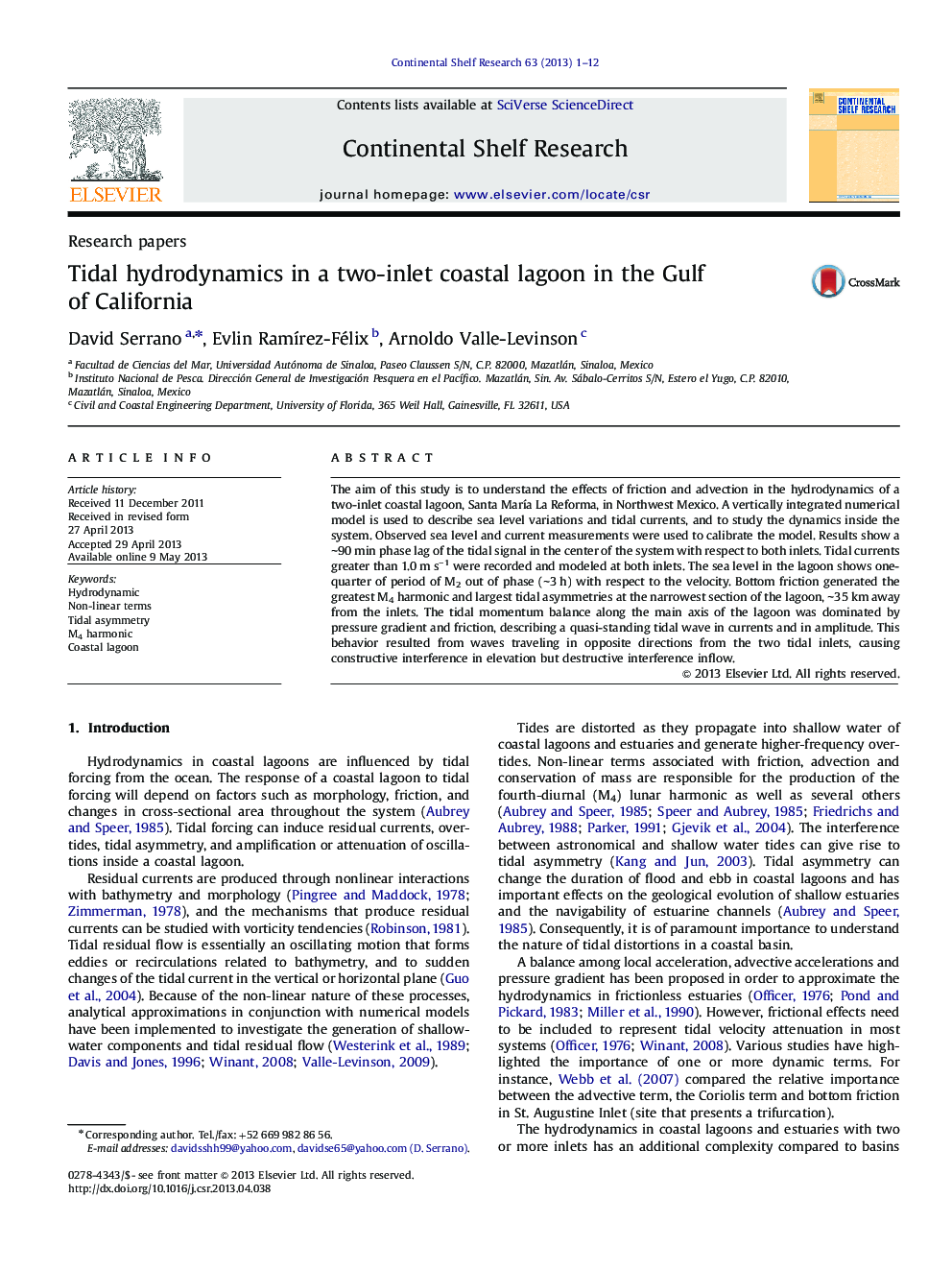| Article ID | Journal | Published Year | Pages | File Type |
|---|---|---|---|---|
| 4532123 | Continental Shelf Research | 2013 | 12 Pages |
•We study the effects of friction and advective terms of a coastal lagoon.•A numerical model was used to describe sea level variations and tidal currents.•The bottom friction term generated an M4 harmonic in the center of the lagoon.
The aim of this study is to understand the effects of friction and advection in the hydrodynamics of a two-inlet coastal lagoon, Santa María La Reforma, in Northwest Mexico. A vertically integrated numerical model is used to describe sea level variations and tidal currents, and to study the dynamics inside the system. Observed sea level and current measurements were used to calibrate the model. Results show a ∼90 min phase lag of the tidal signal in the center of the system with respect to both inlets. Tidal currents greater than 1.0 m s−1 were recorded and modeled at both inlets. The sea level in the lagoon shows one-quarter of period of M2 out of phase (∼3 h) with respect to the velocity. Bottom friction generated the greatest M4 harmonic and largest tidal asymmetries at the narrowest section of the lagoon, ∼35 km away from the inlets. The tidal momentum balance along the main axis of the lagoon was dominated by pressure gradient and friction, describing a quasi-standing tidal wave in currents and in amplitude. This behavior resulted from waves traveling in opposite directions from the two tidal inlets, causing constructive interference in elevation but destructive interference inflow.
